
awesome-llm
Awesome series for Large Language Model(LLM)s
Stars: 58
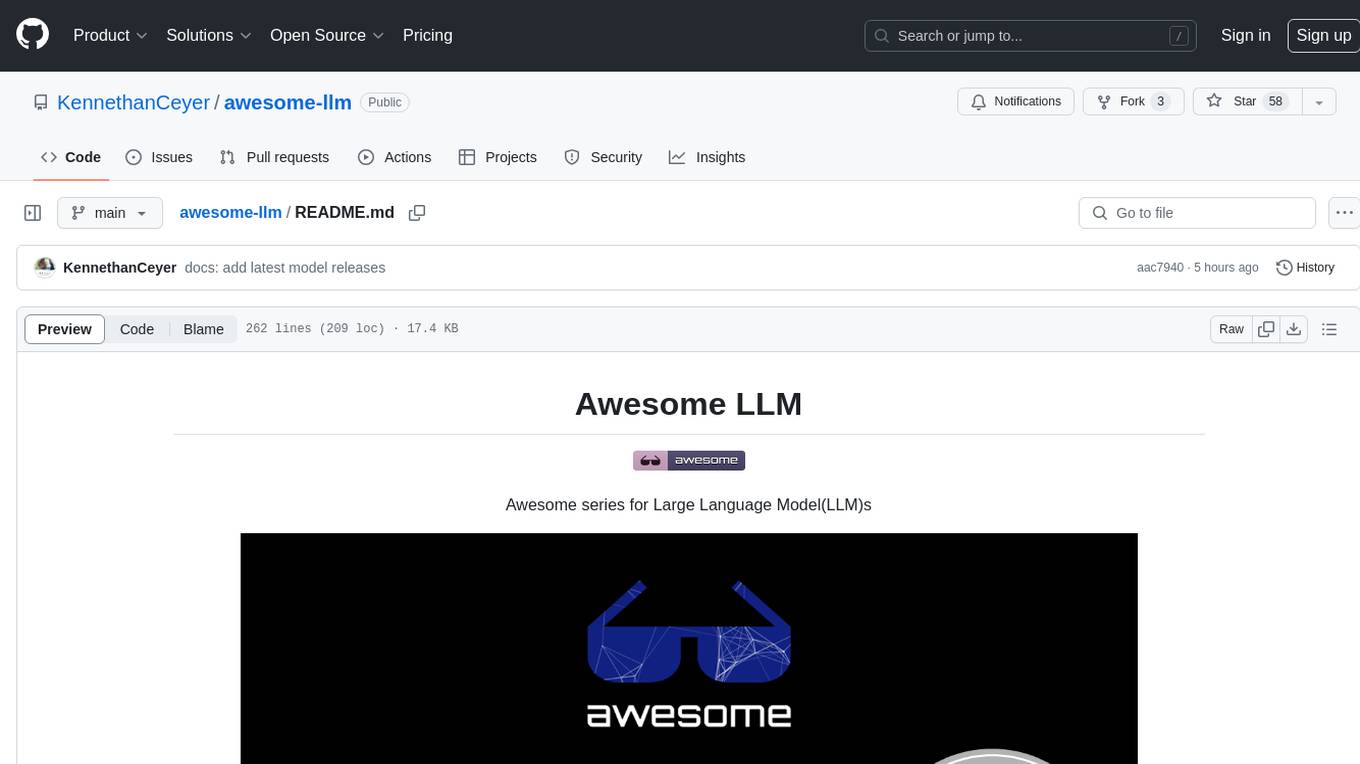
Awesome LLM is a curated list of resources related to Large Language Models (LLMs), including models, projects, datasets, benchmarks, materials, papers, posts, GitHub repositories, HuggingFace repositories, and reading materials. It provides detailed information on various LLMs, their parameter sizes, announcement dates, and contributors. The repository covers a wide range of LLM-related topics and serves as a valuable resource for researchers, developers, and enthusiasts interested in the field of natural language processing and artificial intelligence.
README:
Awesome series for Large Language Model(LLM)s
| Name | Parameter size | Announcement date |
|---|---|---|
| BERT-Large (336M) | 336 million | 2018 |
| T5 (11B) | 11 billion | 2020 |
| Gopher (280B) | 280 billion | 2021 |
| GPT-J (6B) | 6 billion | 2021 |
| LaMDA (137B) | 137 billion | 2021 |
| Megatron-Turing NLG (530B) | 530 billion | 2021 |
| T0 (11B) | 11 billion | 2021 |
| Macaw (11B) | 11 billion | 2021 |
| GLaM (1.2T) | 1.2 trillion | 2021 |
| T5 FLAN (540B) | 540 billion | 2022 |
| OPT-175B (175B) | 175 billion | 2022 |
| ChatGPT (175B) | 175 billion | 2022 |
| GPT 3.5 (175B) | 175 billion | 2022 |
| AlexaTM (20B) | 20 billion | 2022 |
| Bloom (176B) | 176 billion | 2022 |
| Bard | Not yet announced | 2023 |
| GPT 4 | Not yet announced | 2023 |
| AlphaCode (41.4B) | 41.4 billion | 2022 |
| Chinchilla (70B) | 70 billion | 2022 |
| Sparrow (70B) | 70 billion | 2022 |
| PaLM (540B) | 540 billion | 2022 |
| NLLB (54.5B) | 54.5 billion | 2022 |
| Alexa TM (20B) | 20 billion | 2022 |
| Galactica (120B) | 120 billion | 2022 |
| UL2 (20B) | 20 billion | 2022 |
| Jurassic-1 (178B) | 178 billion | 2022 |
| LLaMA (65B) | 65 billion | 2023 |
| Stanford Alpaca (7B) | 7 billion | 2023 |
| GPT-NeoX 2.0 (20B) | 20 billion | 2023 |
| BloombergGPT | 50 billion | 2023 |
| Dolly | 6 billion | 2023 |
| Jurassic-2 | Not yet announced | 2023 |
| OpenAssistant LLaMa | 30 billion | 2023 |
| Koala | 13 billion | 2023 |
| Vicuna | 13 billion | 2023 |
| PaLM2 | Not yet announced, Smaller than PaLM1 | 2023 |
| LIMA | 65 billion | 2023 |
| MPT | 7 billion | 2023 |
| Falcon | 40 billion | 2023 |
| Llama 2 | 70 billion | 2023 |
| Google Gemini | Not yet announced | 2023 |
| Microsoft Phi-2 | 2.7 billion | 2023 |
| Grok-0 | 33 billion | 2023 |
| Grok-1 | 314 billion | 2023 |
| Solar | 10.7 billion | 2024 |
| Gemma | 7 billion | 2024 |
| Grok-1.5 | Not yet announced | 2024 |
| DBRX | 132 billion | 2024 |
| Claude 3 | Not yet announced | 2024 |
| Gemma 1.1 | 7 billion | 2024 |
| Llama 3 | 70 billion | 2024 |
- T5 (11B) - Announced by Google / 2020
- T5 FLAN (540B) - Announced by Google / 2022
- T0 (11B) - Announced by BigScience (HuggingFace) / 2021
- OPT-175B (175B) - Announced by Meta / 2022
- UL2 (20B) - Announced by Google / 2022
- Bloom (176B) - Announced by BigScience (HuggingFace) / 2022
- BERT-Large (336M) - Announced by Google / 2018
- GPT-NeoX 2.0 (20B) - Announced by EleutherAI / 2023
- GPT-J (6B) - Announced by EleutherAI / 2021
- Macaw (11B) - Announced by AI2 / 2021
- Stanford Alpaca (7B) - Announced by Stanford University / 2023
- Visual ChatGPT - Announced by Microsoft / 2023
- LMOps - Large-scale Self-supervised Pre-training Across Tasks, Languages, and Modalities.
- GPT 4 (Parameter size unannounced, gpt-4-32k) - Announced by OpenAI / 2023
- ChatGPT (175B) - Announced by OpenAI / 2022
- ChatGPT Plus (175B) - Announced by OpenAI / 2023
- GPT 3.5 (175B, text-davinci-003) - Announced by OpenAI / 2022
- Gemini - Announced by Google Deepmind / 2023
- Bard - Announced by Google / 2023
- Codex (11B) - Announced by OpenAI / 2021
-
Sphere - Announced by Meta / 2022
-
134Mdocuments split into906Mpassages as the web corpus.
-
-
Common Crawl
-
3.15Bpages and over than380TiBsize dataset, public, free to use.
-
-
SQuAD 2.0
-
100,000+question dataset for QA.
-
-
Pile
-
825 GiB diverse, open source language modelling data set.
-
-
RACE
- A large-scale reading comprehension dataset with more than
28,000passages and nearly100,000questions.
- A large-scale reading comprehension dataset with more than
-
Wikipedia
- Wikipedia dataset containing cleaned articles of all languages.
- Megatron-Turing NLG (530B) - Announced by NVIDIA and Microsoft / 2021
- LaMDA (137B) - Announced by Google / 2021
- GLaM (1.2T) - Announced by Google / 2021
- PaLM (540B) - Announced by Google / 2022
- AlphaCode (41.4B) - Announced by DeepMind / 2022
- Chinchilla (70B) - Announced by DeepMind / 2022
- Sparrow (70B) - Announced by DeepMind / 2022
- NLLB (54.5B) - Announced by Meta / 2022
- LLaMA (65B) - Announced by Meta / 2023
- AlexaTM (20B) - Announced by Amazon / 2022
- Gopher (280B) - Announced by DeepMind / 2021
- Galactica (120B) - Announced by Meta / 2022
- PaLM2 Tech Report - Announced by Google / 2023
- LIMA - Announced by Meta / 2023
- Llama 2 (70B) - Announced by Meta / 2023
- Luminous (13B) - Announced by Aleph Alpha / 2021
- Turing NLG (17B) - Announced by Microsoft / 2020
- Claude (52B) - Announced by Anthropic / 2021
- Minerva (Parameter size unannounced) - Announced by Google / 2022
- BloombergGPT (50B) - Announced by Bloomberg / 2023
- AlexaTM (20B - Announced by Amazon / 2023
- Dolly (6B) - Announced by Databricks / 2023
- Jurassic-1 - Announced by AI21 / 2022
- Jurassic-2 - Announced by AI21 / 2023
- Koala - Announced by Berkeley Artificial Intelligence Research(BAIR) / 2023
- Gemma - Gemma: Introducing new state-of-the-art open models / 2024
- Grok-1 - Open Release of Grok-1 / 2023
- Grok-1.5 - Announced by XAI / 2024
- DBRX - Announced by Databricks / 2024
- BigScience - Maintained by HuggingFace (Twitter) (Notion)
- HuggingChat - Maintained by HuggingFace / 2023
- OpenAssistant - Maintained by Open Assistant / 2023
- StableLM - Maintained by Stability AI / 2023
- Eleuther AI Language Model- Maintained by Eleuther AI / 2023
- Falcon LLM - Maintained by Technology Innovation Institute / 2023
- Gemma - Maintained by Google / 2024
-
Stanford Alpaca -
- A repository of Stanford Alpaca project, a model fine-tuned from the LLaMA 7B model on 52K instruction-following demonstrations.
-
Dolly -
- A large language model trained on the Databricks Machine Learning Platform.
-
AutoGPT -
- An experimental open-source attempt to make GPT-4 fully autonomous.
-
dalai -
- The cli tool to run LLaMA on the local machine.
-
LLaMA-Adapter -
- Fine-tuning LLaMA to follow Instructions within 1 Hour and 1.2M Parameters.
-
alpaca-lora -
- Instruct-tune LLaMA on consumer hardware.
-
llama_index -
- A project that provides a central interface to connect your LLM's with external data.
-
openai/evals -
- A curated list of reinforcement learning with human feedback resources.
-
trlx -
- A repo for distributed training of language models with Reinforcement Learning via Human Feedback. (RLHF)
-
pythia -
- A suite of 16 LLMs all trained on public data seen in the exact same order and ranging in size from 70M to 12B parameters.
-
Embedchain -
- Framework to create ChatGPT like bots over your dataset.
- OpenAssistant SFT 6 - 30 billion LLaMa-based model made by HuggingFace for the chatting conversation.
- Vicuna Delta v0 - An open-source chatbot trained by fine-tuning LLaMA on user-shared conversations collected from ShareGPT.
- MPT 7B - A decoder-style transformer pre-trained from scratch on 1T tokens of English text and code. This model was trained by MosaicML.
- Falcon 7B - A 7B parameters causal decoder-only model built by TII and trained on 1,500B tokens of RefinedWeb enhanced with curated corpora.
- Phi-2: The surprising power of small language models
- StackLLaMA: A hands-on guide to train LLaMA with RLHF
- PaLM2
- PaLM2 and Future work: Gemini model
We welcome contributions to the Awesome LLMOps list! If you'd like to suggest an addition or make a correction, please follow these guidelines:
- Fork the repository and create a new branch for your contribution.
- Make your changes to the README.md file.
- Ensure that your contribution is relevant to the topic of LLM.
- Use the following format to add your contribution:
[Name of Resource](Link to Resource) - Description of resource- Add your contribution in alphabetical order within its category.
- Make sure that your contribution is not already listed.
- Provide a brief description of the resource and explain why it is relevant to LLM.
- Create a pull request with a clear title and description of your changes.
We appreciate your contributions and thank you for helping to make the Awesome LLM list even more awesome!
For Tasks:
Click tags to check more tools for each tasksFor Jobs:
Alternative AI tools for awesome-llm
Similar Open Source Tools

awesome-llm
Awesome LLM is a curated list of resources related to Large Language Models (LLMs), including models, projects, datasets, benchmarks, materials, papers, posts, GitHub repositories, HuggingFace repositories, and reading materials. It provides detailed information on various LLMs, their parameter sizes, announcement dates, and contributors. The repository covers a wide range of LLM-related topics and serves as a valuable resource for researchers, developers, and enthusiasts interested in the field of natural language processing and artificial intelligence.
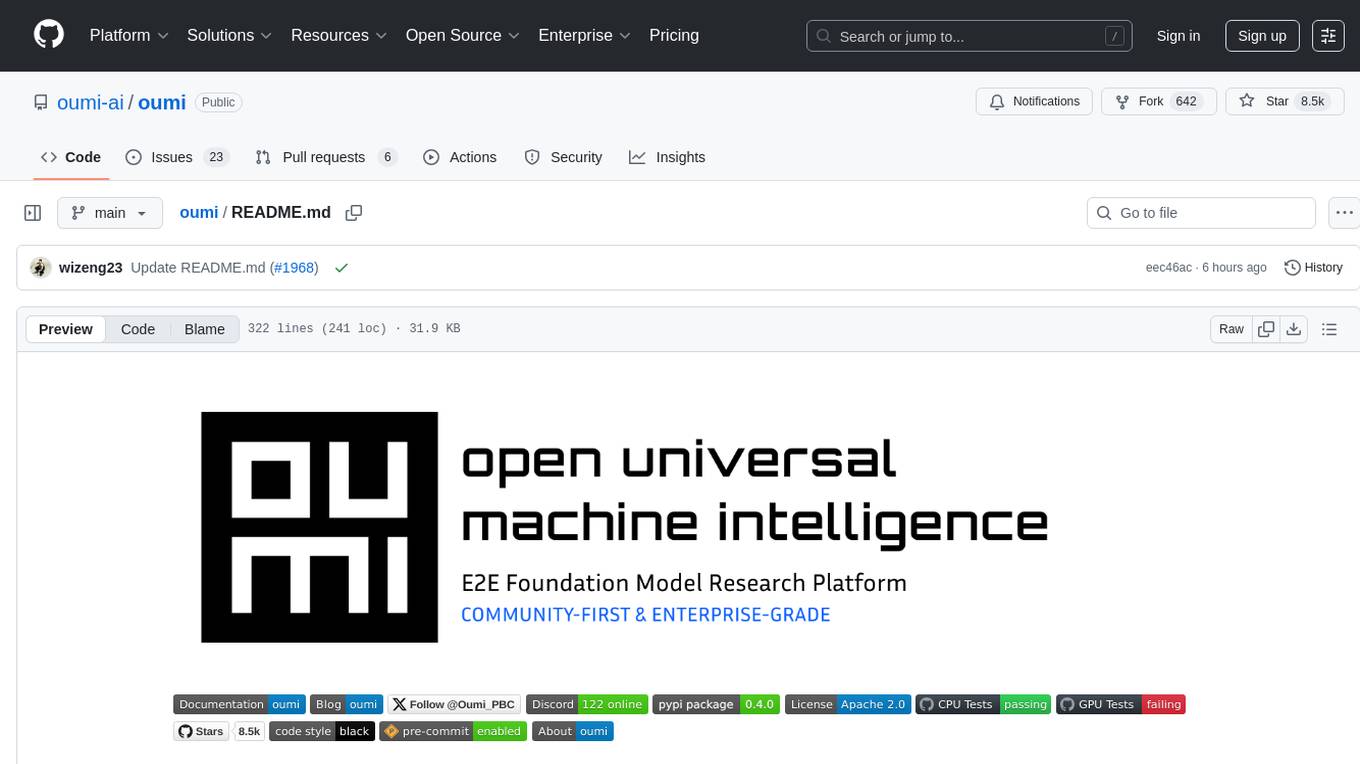
oumi
Oumi is an open-source platform for building state-of-the-art foundation models, offering tools for data preparation, training, evaluation, and deployment. It supports training and fine-tuning models with various parameters, working with text and multimodal models, synthesizing and curating training data, deploying models efficiently, evaluating models comprehensively, and running on different platforms. Oumi provides a consistent API, reliability, and flexibility for research purposes.
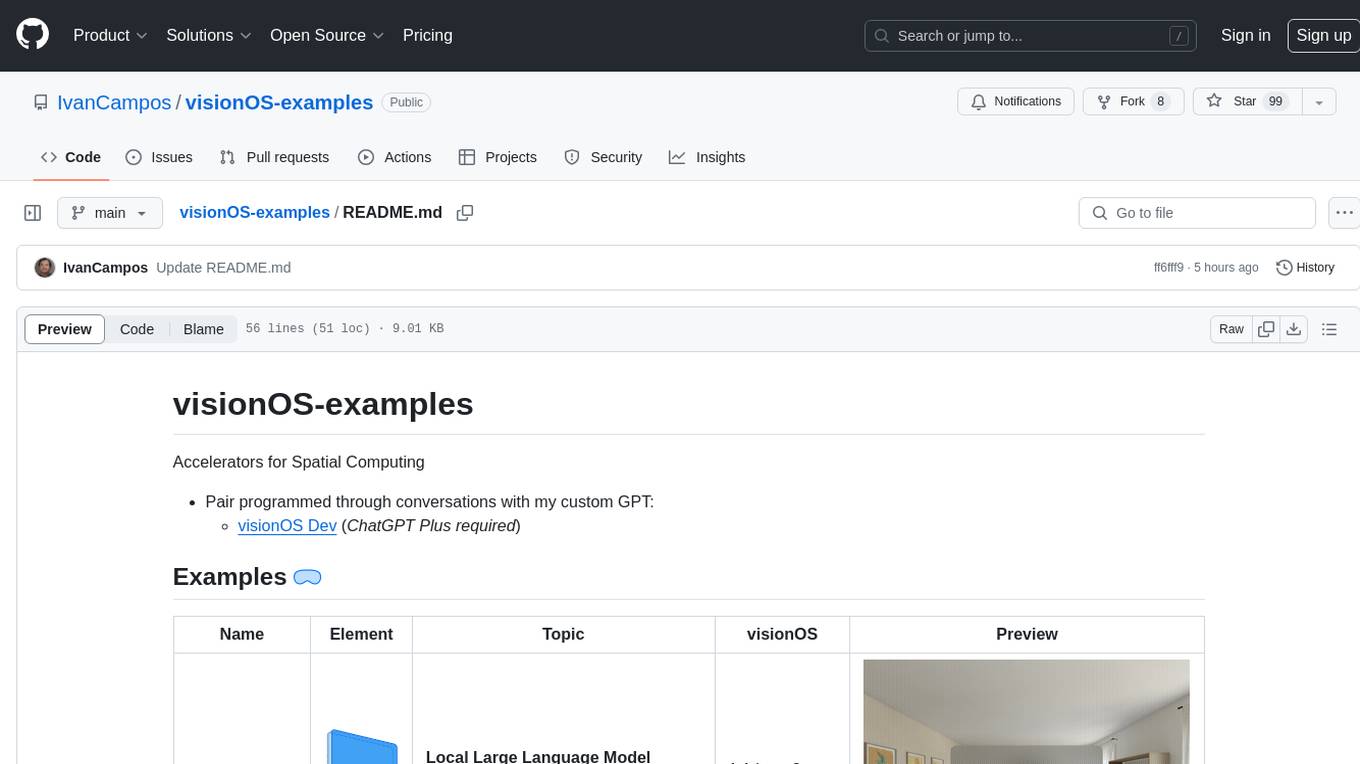
visionOS-examples
visionOS-examples is a repository containing accelerators for Spatial Computing. It includes examples such as Local Large Language Model, Chat Apple Vision Pro, WebSockets, Anchor To Head, Hand Tracking, Battery Life, Countdown, Plane Detection, Timer Vision, and PencilKit for visionOS. The repository showcases various functionalities and features for Apple Vision Pro, offering tools for developers to enhance their visionOS apps with capabilities like hand tracking, plane detection, and real-time cryptocurrency prices.
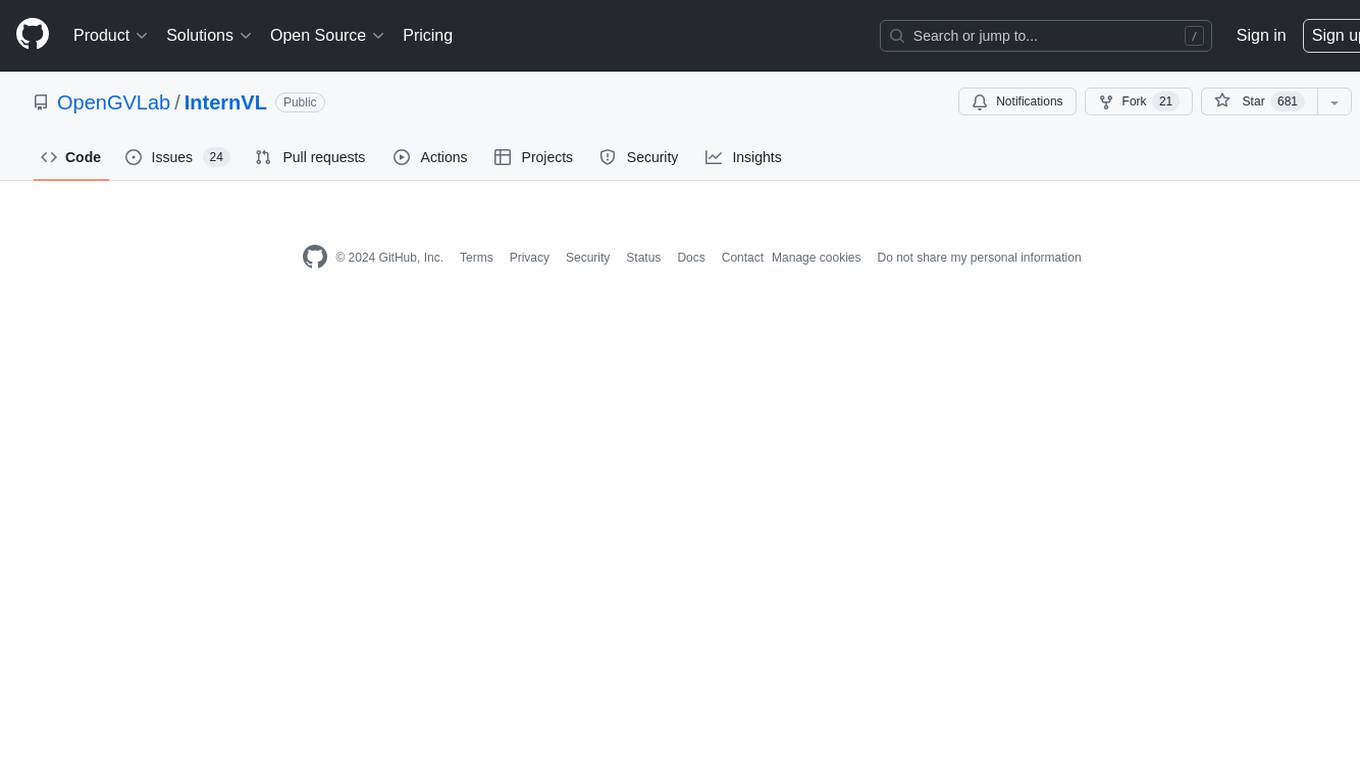
InternVL
InternVL scales up the ViT to _**6B parameters**_ and aligns it with LLM. It is a vision-language foundation model that can perform various tasks, including: **Visual Perception** - Linear-Probe Image Classification - Semantic Segmentation - Zero-Shot Image Classification - Multilingual Zero-Shot Image Classification - Zero-Shot Video Classification **Cross-Modal Retrieval** - English Zero-Shot Image-Text Retrieval - Chinese Zero-Shot Image-Text Retrieval - Multilingual Zero-Shot Image-Text Retrieval on XTD **Multimodal Dialogue** - Zero-Shot Image Captioning - Multimodal Benchmarks with Frozen LLM - Multimodal Benchmarks with Trainable LLM - Tiny LVLM InternVL has been shown to achieve state-of-the-art results on a variety of benchmarks. For example, on the MMMU image classification benchmark, InternVL achieves a top-1 accuracy of 51.6%, which is higher than GPT-4V and Gemini Pro. On the DocVQA question answering benchmark, InternVL achieves a score of 82.2%, which is also higher than GPT-4V and Gemini Pro. InternVL is open-sourced and available on Hugging Face. It can be used for a variety of applications, including image classification, object detection, semantic segmentation, image captioning, and question answering.
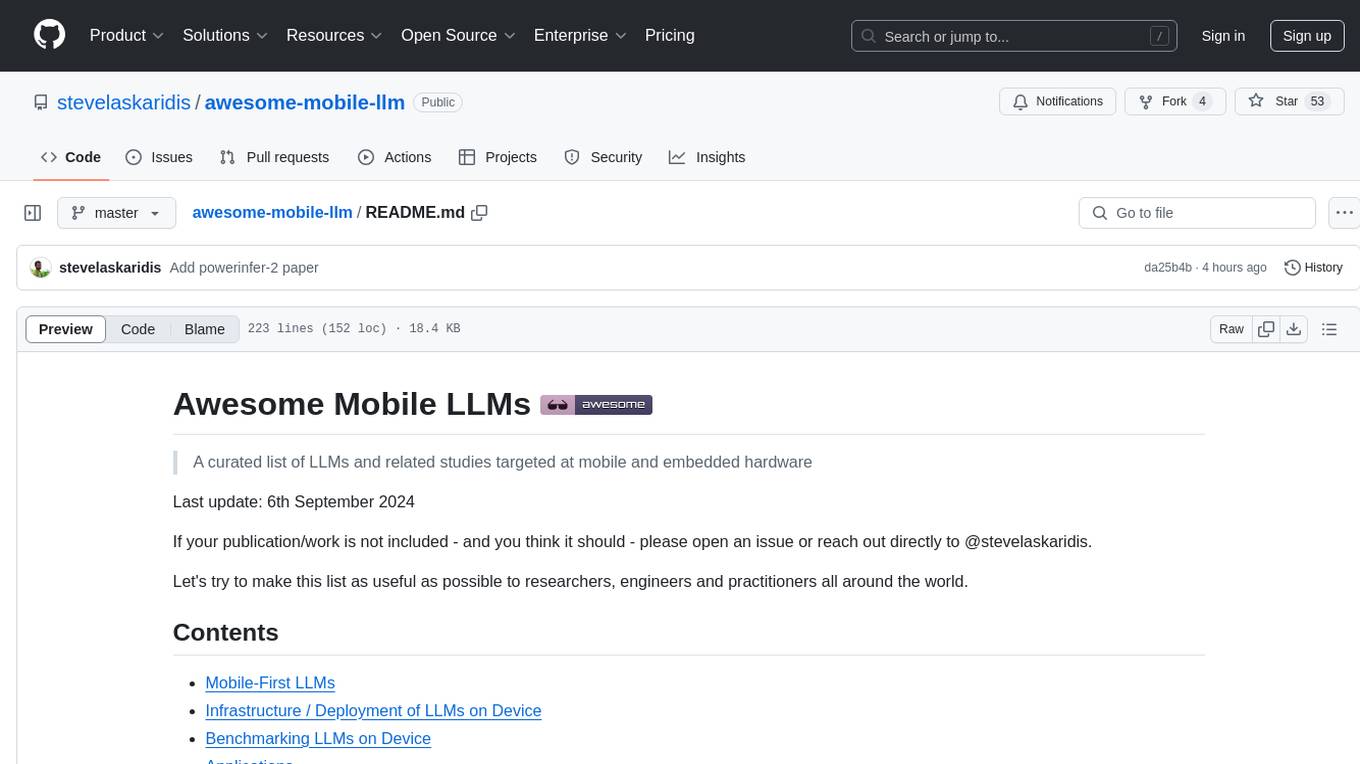
awesome-mobile-llm
Awesome Mobile LLMs is a curated list of Large Language Models (LLMs) and related studies focused on mobile and embedded hardware. The repository includes information on various LLM models, deployment frameworks, benchmarking efforts, applications, multimodal LLMs, surveys on efficient LLMs, training LLMs on device, mobile-related use-cases, industry announcements, and related repositories. It aims to be a valuable resource for researchers, engineers, and practitioners interested in mobile LLMs.
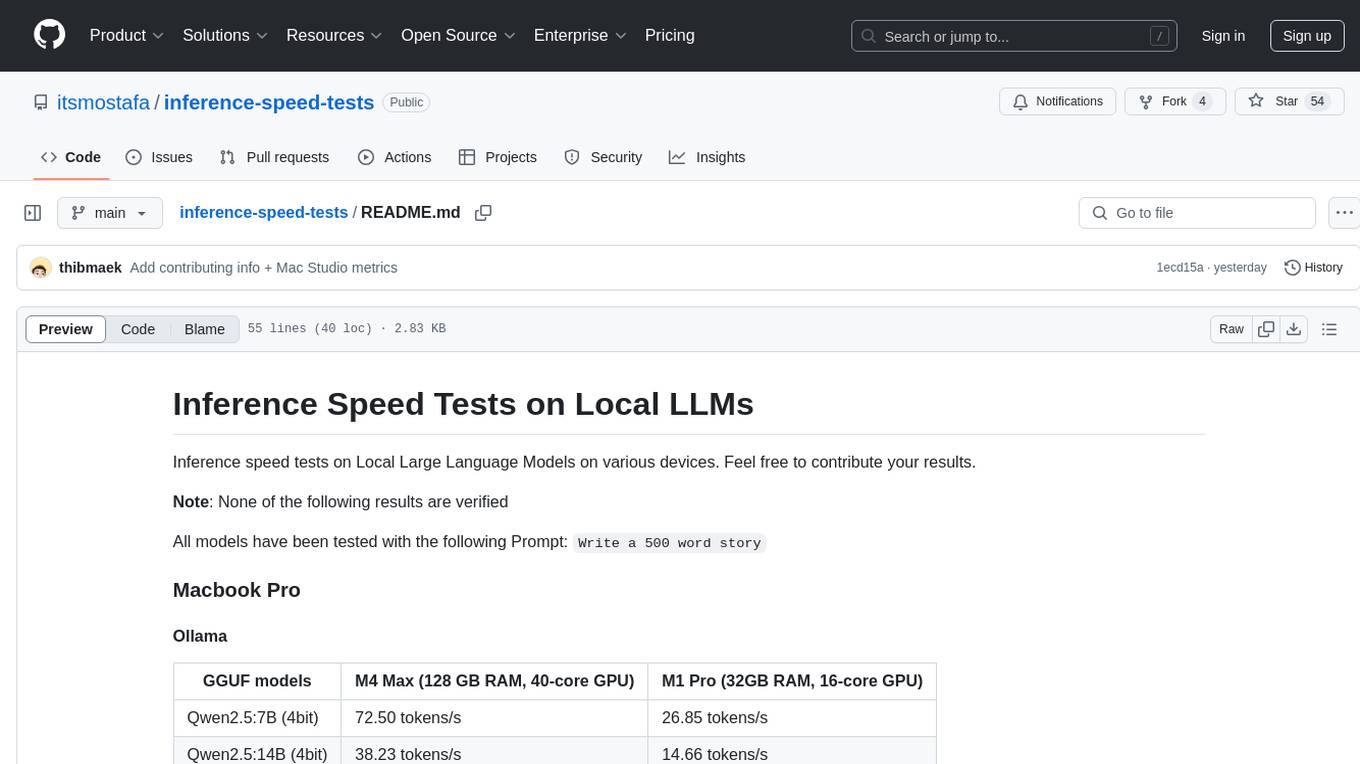
inference-speed-tests
This repository contains inference speed tests on Local Large Language Models on various devices. It provides results for different models tested on Macbook Pro and Mac Studio. Users can contribute their own results by running models with the provided prompt and adding the tokens-per-second output. Note that the results are not verified.
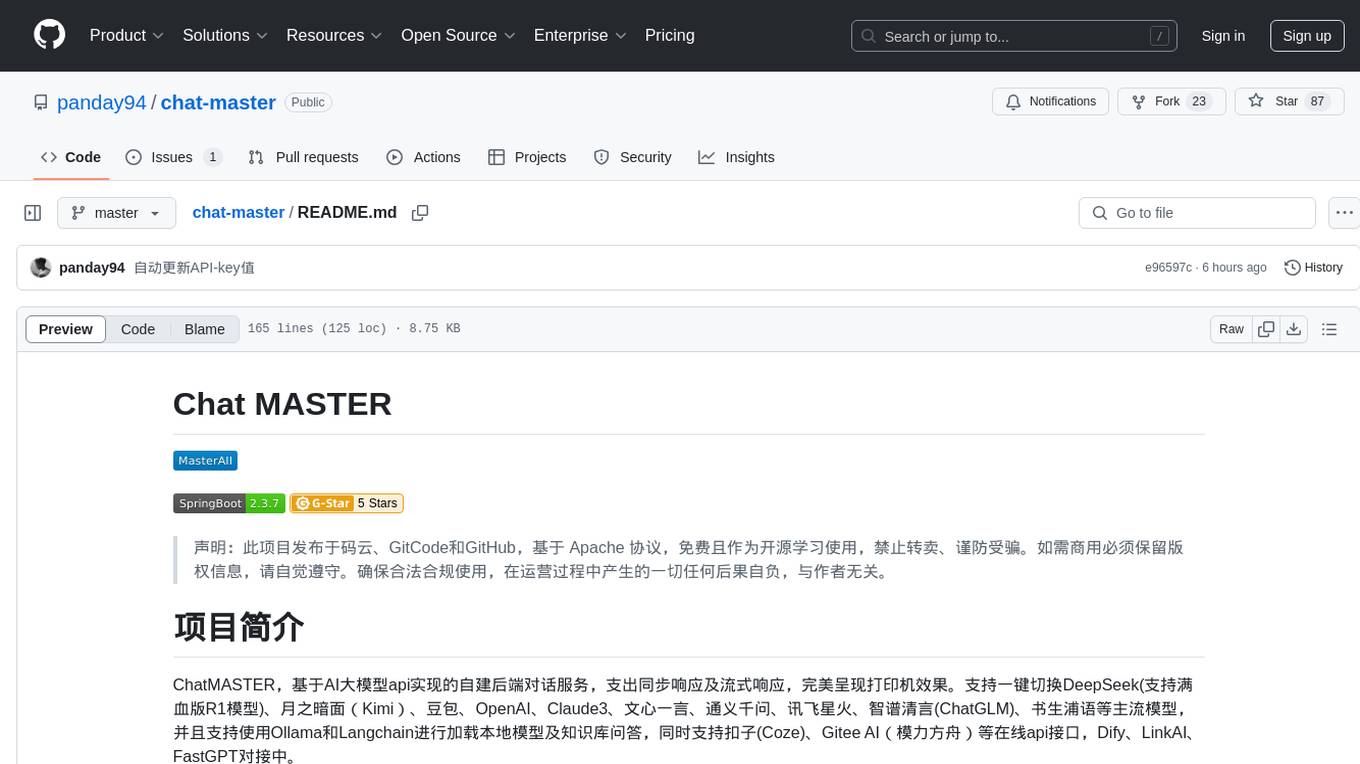
chat-master
ChatMASTER is a self-built backend conversation service based on AI large model APIs, supporting synchronous and streaming responses with perfect printer effects. It supports switching between mainstream models such as DeepSeek, Kimi, Doubao, OpenAI, Claude3, Yiyan, Tongyi, Xinghuo, ChatGLM, Shusheng, and more. It also supports loading local models and knowledge bases using Ollama and Langchain, as well as online API interfaces like Coze and Gitee AI. The project includes Java server-side, web-side, mobile-side, and management background configuration. It provides various assistant types for prompt output and allows creating custom assistant templates in the management background. The project uses technologies like Spring Boot, Spring Security + JWT, Mybatis-Plus, Lombok, Mysql & Redis, with easy-to-understand code and comprehensive permission control using JWT authentication system for multi-terminal support.
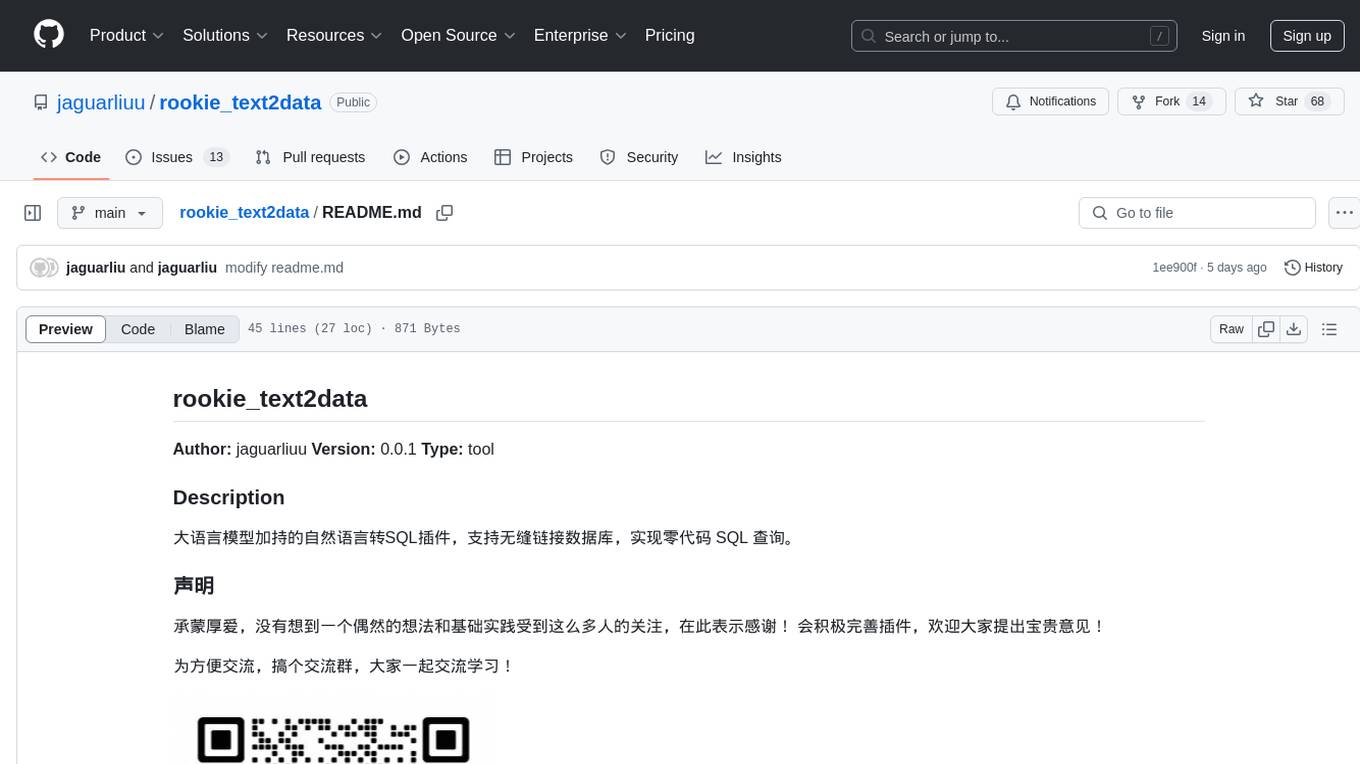
rookie_text2data
A natural language to SQL plugin powered by large language models, supporting seamless database connection for zero-code SQL queries. The plugin is designed to facilitate communication and learning among users. It supports MySQL database and various large models for natural language processing. Users can quickly install the plugin, authorize a database address, import the plugin, select a model, and perform natural language SQL queries.
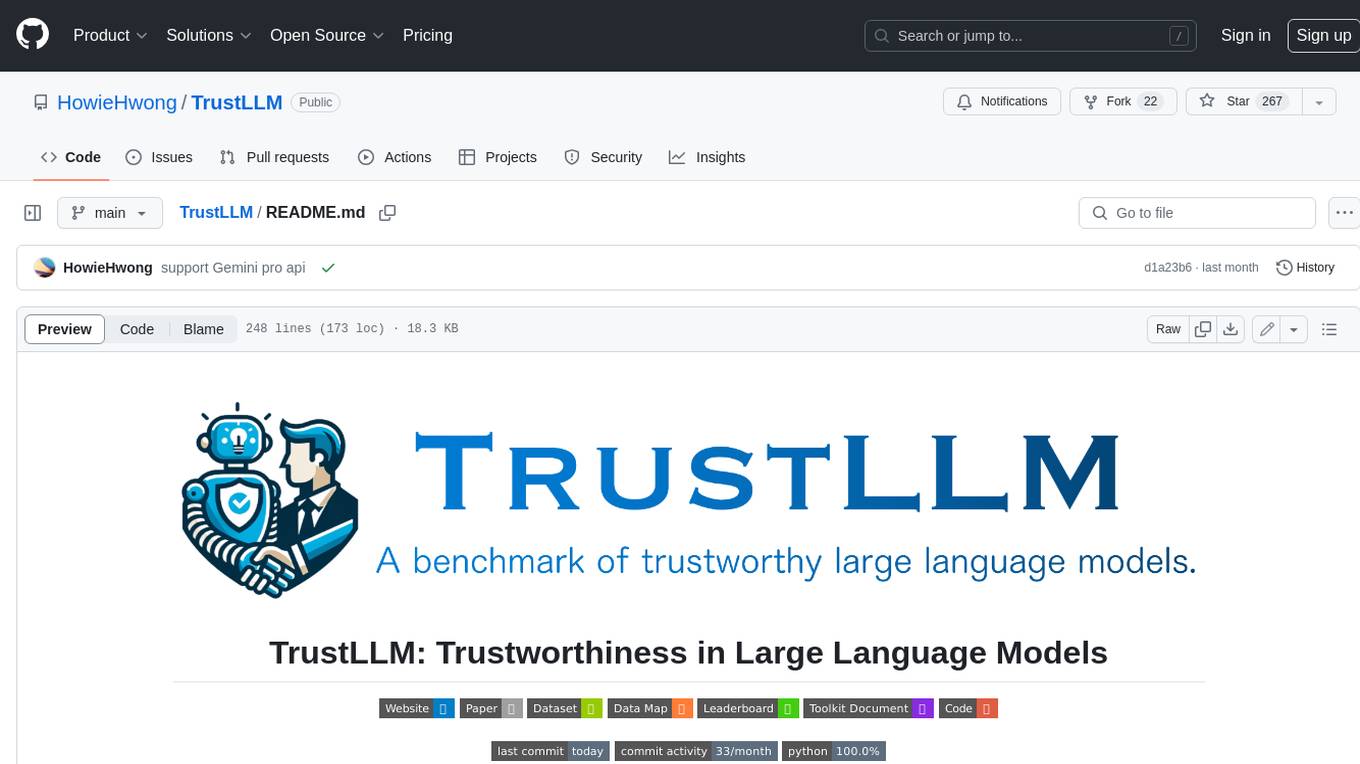
TrustLLM
TrustLLM is a comprehensive study of trustworthiness in LLMs, including principles for different dimensions of trustworthiness, established benchmark, evaluation, and analysis of trustworthiness for mainstream LLMs, and discussion of open challenges and future directions. Specifically, we first propose a set of principles for trustworthy LLMs that span eight different dimensions. Based on these principles, we further establish a benchmark across six dimensions including truthfulness, safety, fairness, robustness, privacy, and machine ethics. We then present a study evaluating 16 mainstream LLMs in TrustLLM, consisting of over 30 datasets. The document explains how to use the trustllm python package to help you assess the performance of your LLM in trustworthiness more quickly. For more details about TrustLLM, please refer to project website.
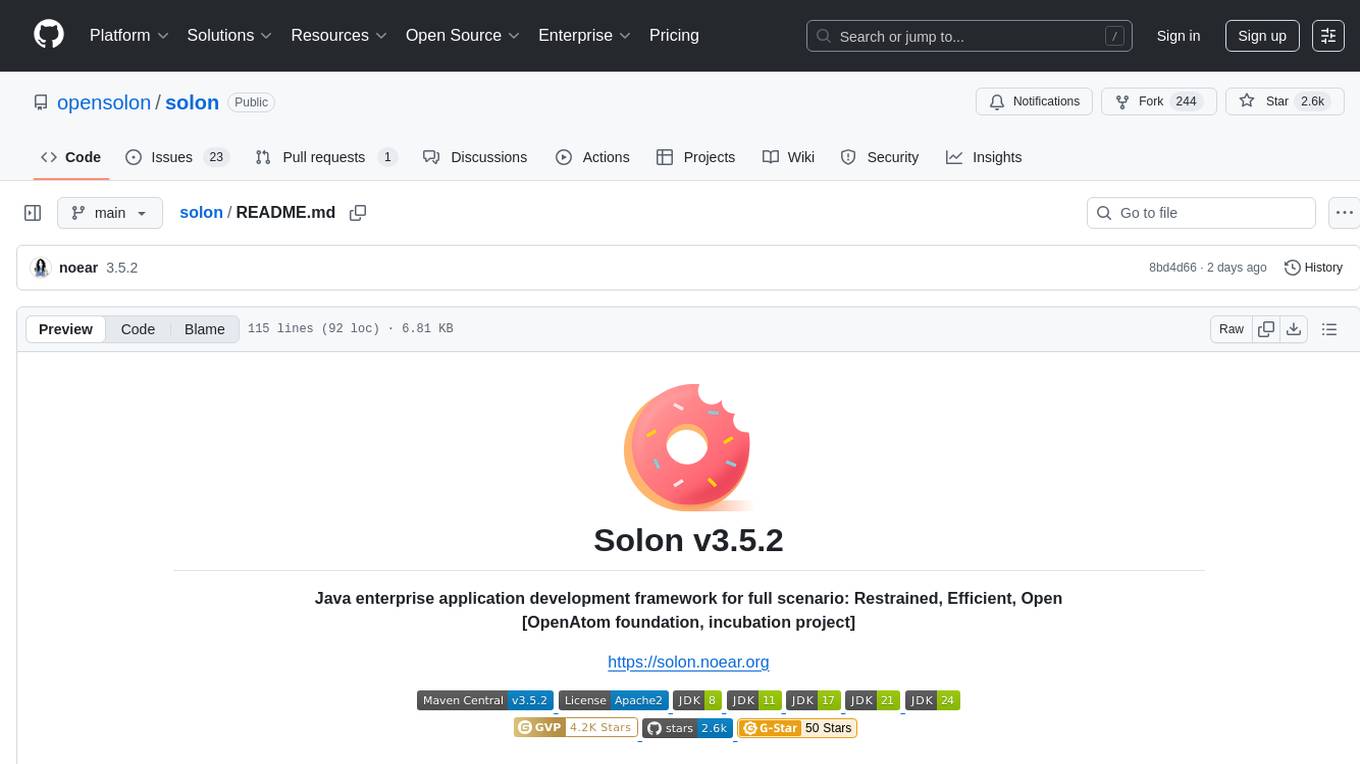
solon
Solon is a Java enterprise application development framework that is restrained, efficient, and open. It offers better cost performance for computing resources with 700% higher concurrency and 50% memory savings. It enables faster development productivity with less code and easy startup, 10 times faster than traditional methods. Solon provides a better production and deployment experience by packing applications 90% smaller. It supports a greater range of compatibility with non-Java-EE architecture and compatibility with Java 8 to Java 24, including GraalVM native image support. Solon is built from scratch with flexible interface specifications and an open ecosystem.
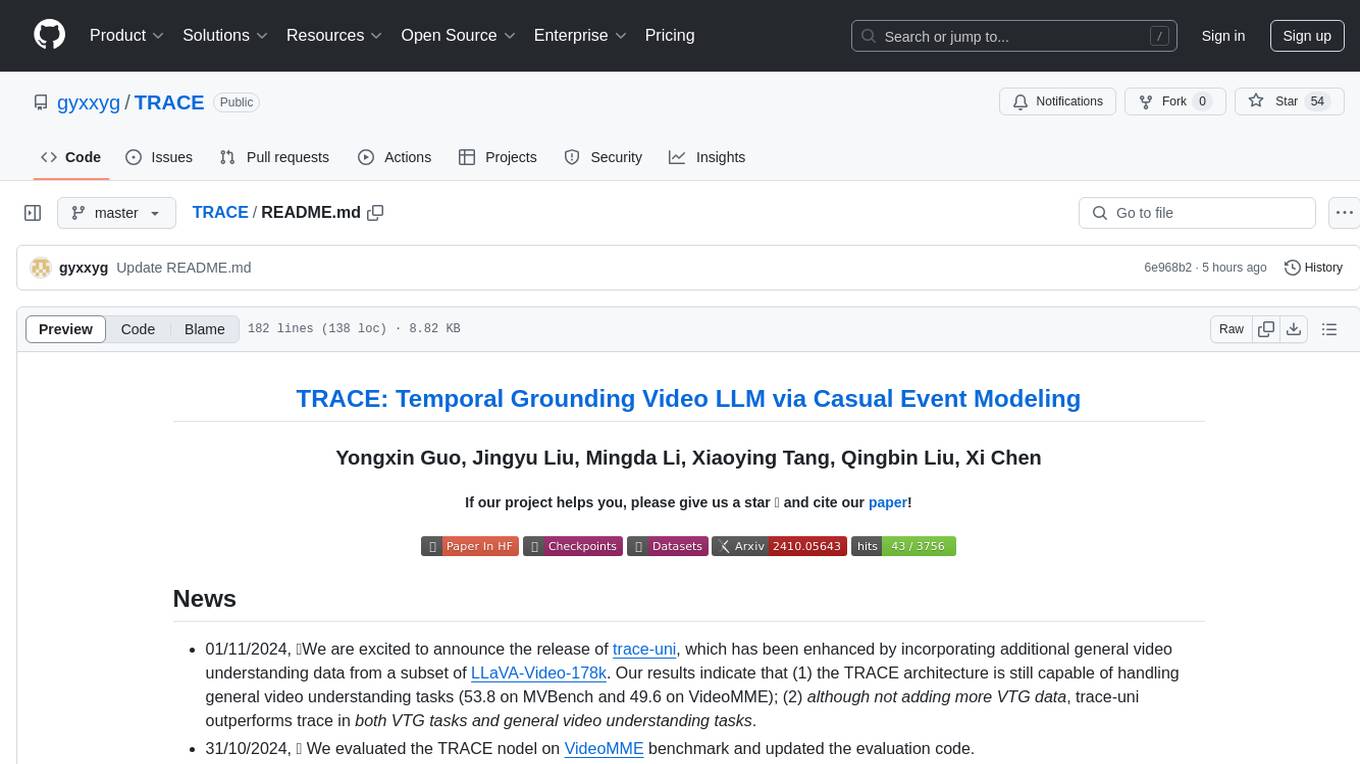
TRACE
TRACE is a temporal grounding video model that utilizes causal event modeling to capture videos' inherent structure. It presents a task-interleaved video LLM model tailored for sequential encoding/decoding of timestamps, salient scores, and textual captions. The project includes various model checkpoints for different stages and fine-tuning on specific datasets. It provides evaluation codes for different tasks like VTG, MVBench, and VideoMME. The repository also offers annotation files and links to raw videos preparation projects. Users can train the model on different tasks and evaluate the performance based on metrics like CIDER, METEOR, SODA_c, F1, mAP, Hit@1, etc. TRACE has been enhanced with trace-retrieval and trace-uni models, showing improved performance on dense video captioning and general video understanding tasks.
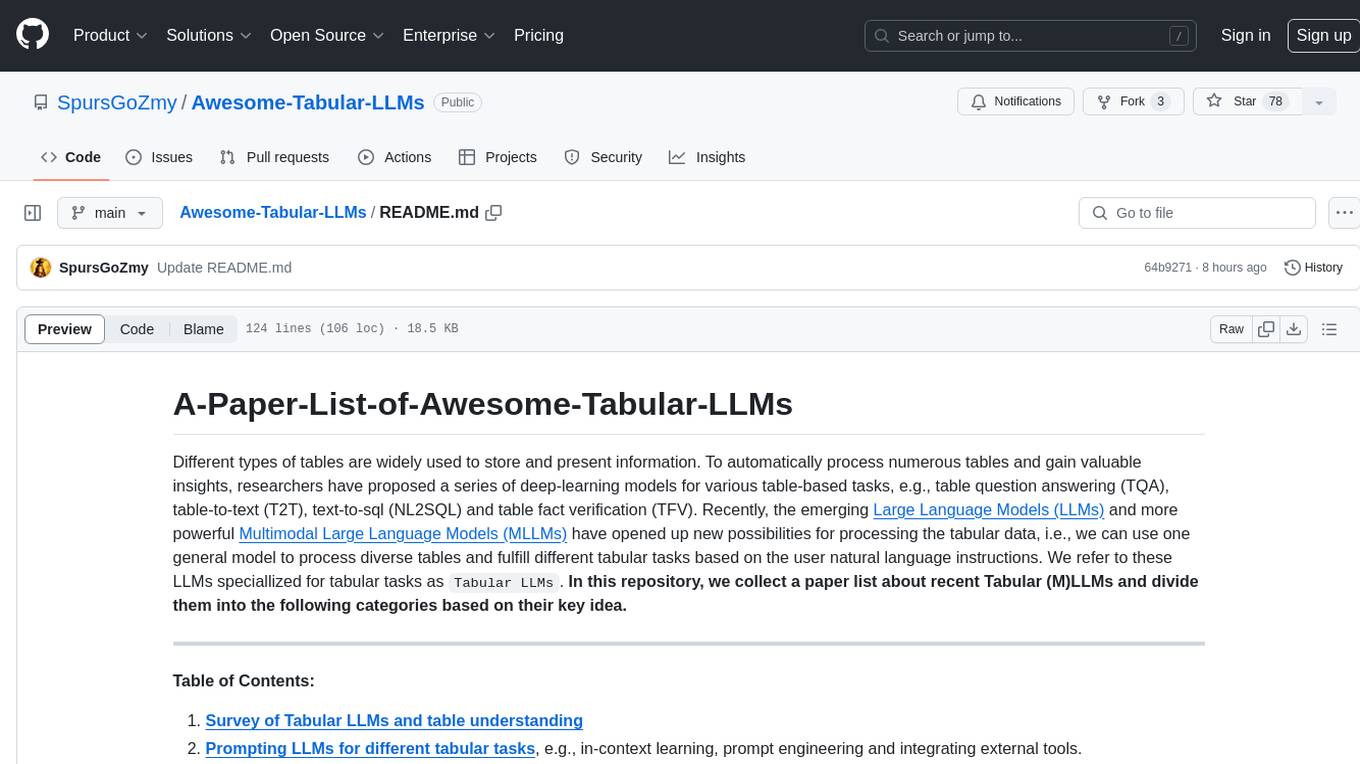
Awesome-Tabular-LLMs
This repository is a collection of papers on Tabular Large Language Models (LLMs) specialized for processing tabular data. It includes surveys, models, and applications related to table understanding tasks such as Table Question Answering, Table-to-Text, Text-to-SQL, and more. The repository categorizes the papers based on key ideas and provides insights into the advancements in using LLMs for processing diverse tables and fulfilling various tabular tasks based on natural language instructions.
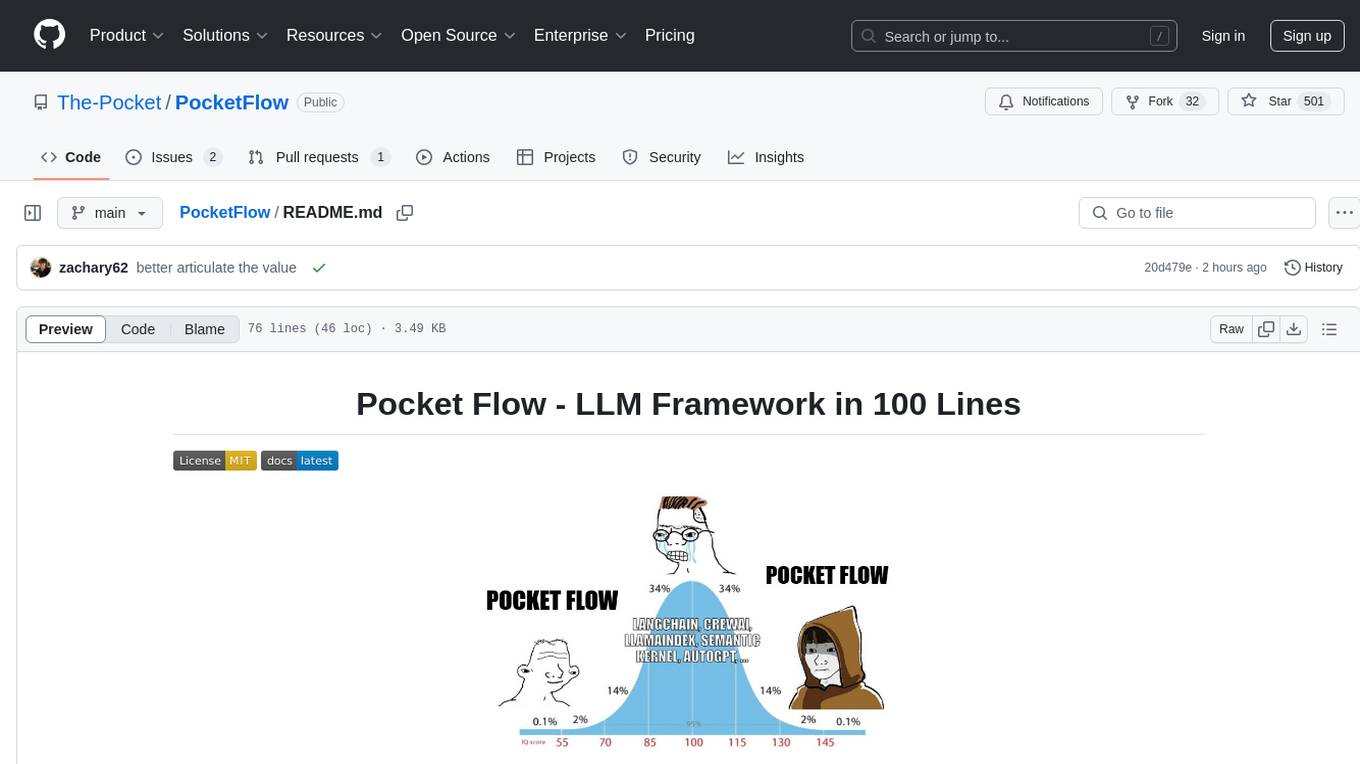
PocketFlow
Pocket Flow is a 100-line minimalist LLM framework designed for (Multi-)Agents, Workflow, RAG, etc. It provides a core abstraction for LLM projects by focusing on computation and communication through a graph structure and shared store. The framework aims to support the development of LLM Agents, such as Cursor AI, by offering a minimal and low-level approach that is well-suited for understanding and usage. Users can install Pocket Flow via pip or by copying the source code, and detailed documentation is available on the project website.
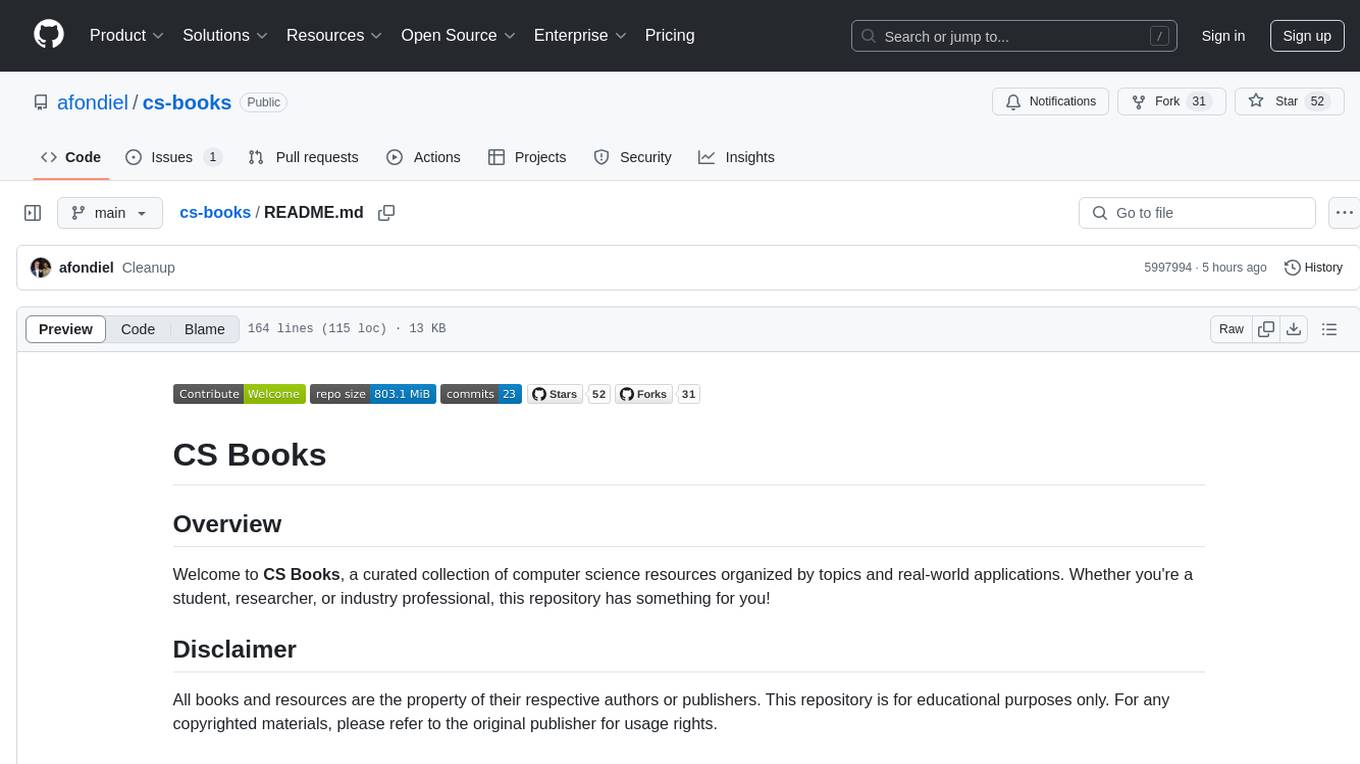
cs-books
CS Books is a curated collection of computer science resources organized by topics and real-world applications. It provides a dual academic/practical focus for students, researchers, and industry professionals. The repository contains a variety of books covering topics such as computer architecture, computer programming, artificial intelligence, data science, cloud computing, edge computing, embedded systems, signal processing, automotive, cybersecurity, game development, healthcare, and robotics. Each section includes a curated list of books with reference links to their Google Drive folders, allowing users to access valuable resources in these fields.
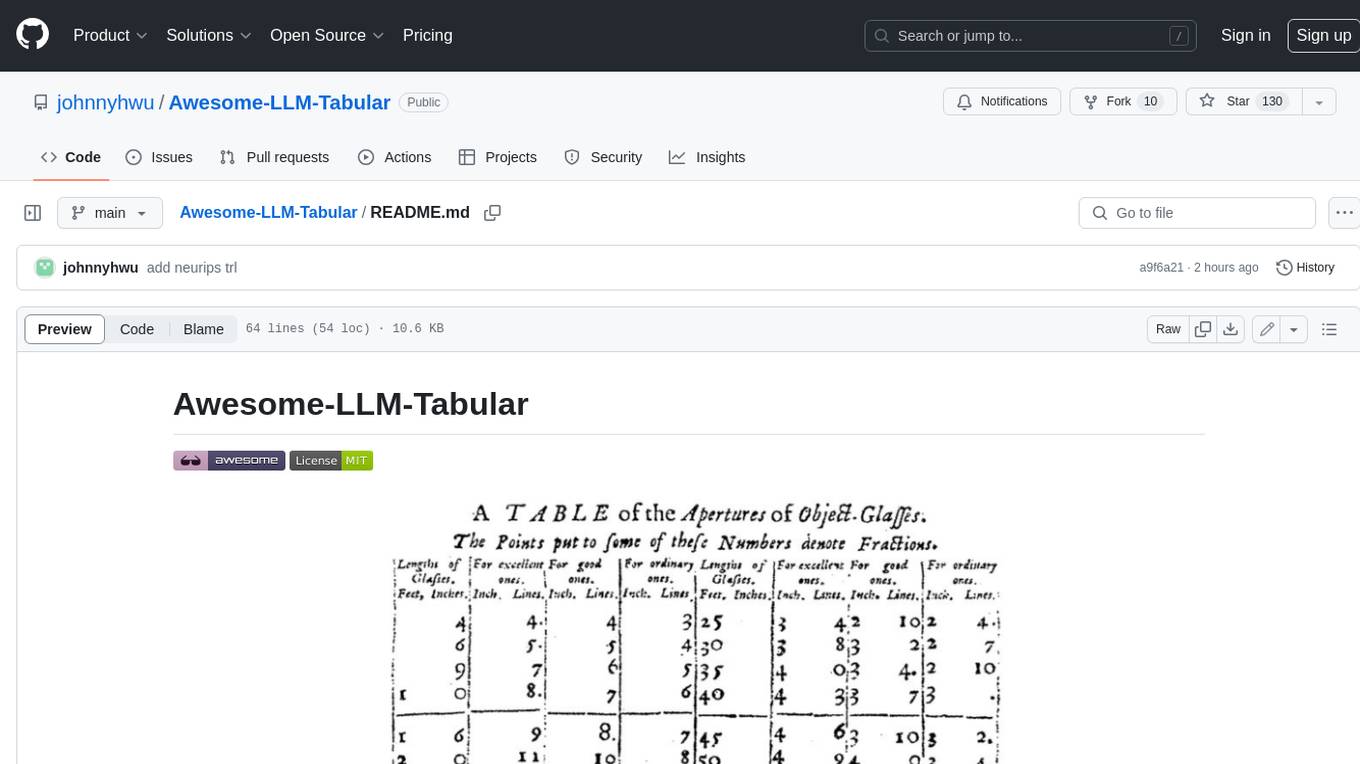
Awesome-LLM-Tabular
This repository is a curated list of research papers that explore the integration of Large Language Model (LLM) technology with tabular data. It aims to provide a comprehensive resource for researchers and practitioners interested in this emerging field. The repository includes papers on a wide range of topics, including table-to-text generation, table question answering, and tabular data classification. It also includes a section on related datasets and resources.
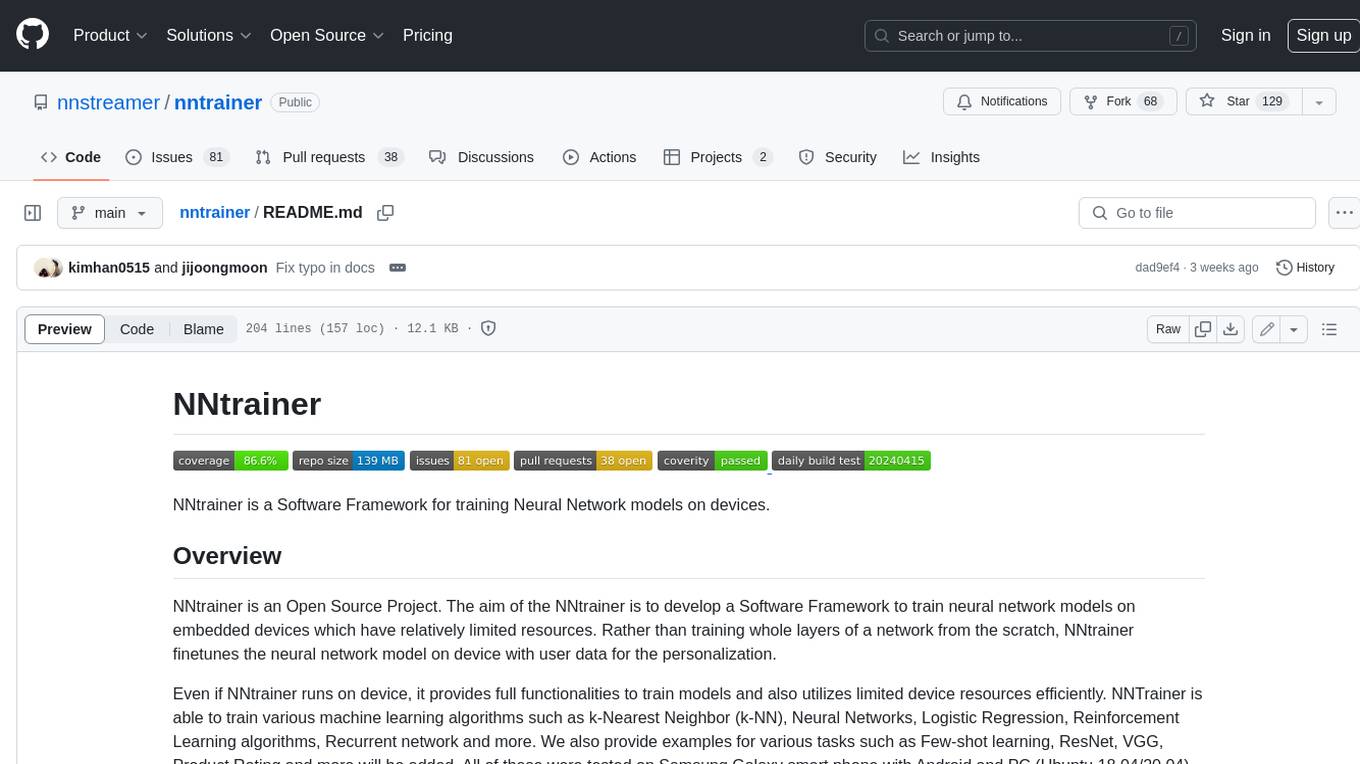
nntrainer
NNtrainer is a software framework for training neural network models on devices with limited resources. It enables on-device fine-tuning of neural networks using user data for personalization. NNtrainer supports various machine learning algorithms and provides examples for tasks such as few-shot learning, ResNet, VGG, and product rating. It is optimized for embedded devices and utilizes CBLAS and CUBLAS for accelerated calculations. NNtrainer is open source and released under the Apache License version 2.0.
For similar tasks

Azure-Analytics-and-AI-Engagement
The Azure-Analytics-and-AI-Engagement repository provides packaged Industry Scenario DREAM Demos with ARM templates (Containing a demo web application, Power BI reports, Synapse resources, AML Notebooks etc.) that can be deployed in a customer’s subscription using the CAPE tool within a matter of few hours. Partners can also deploy DREAM Demos in their own subscriptions using DPoC.
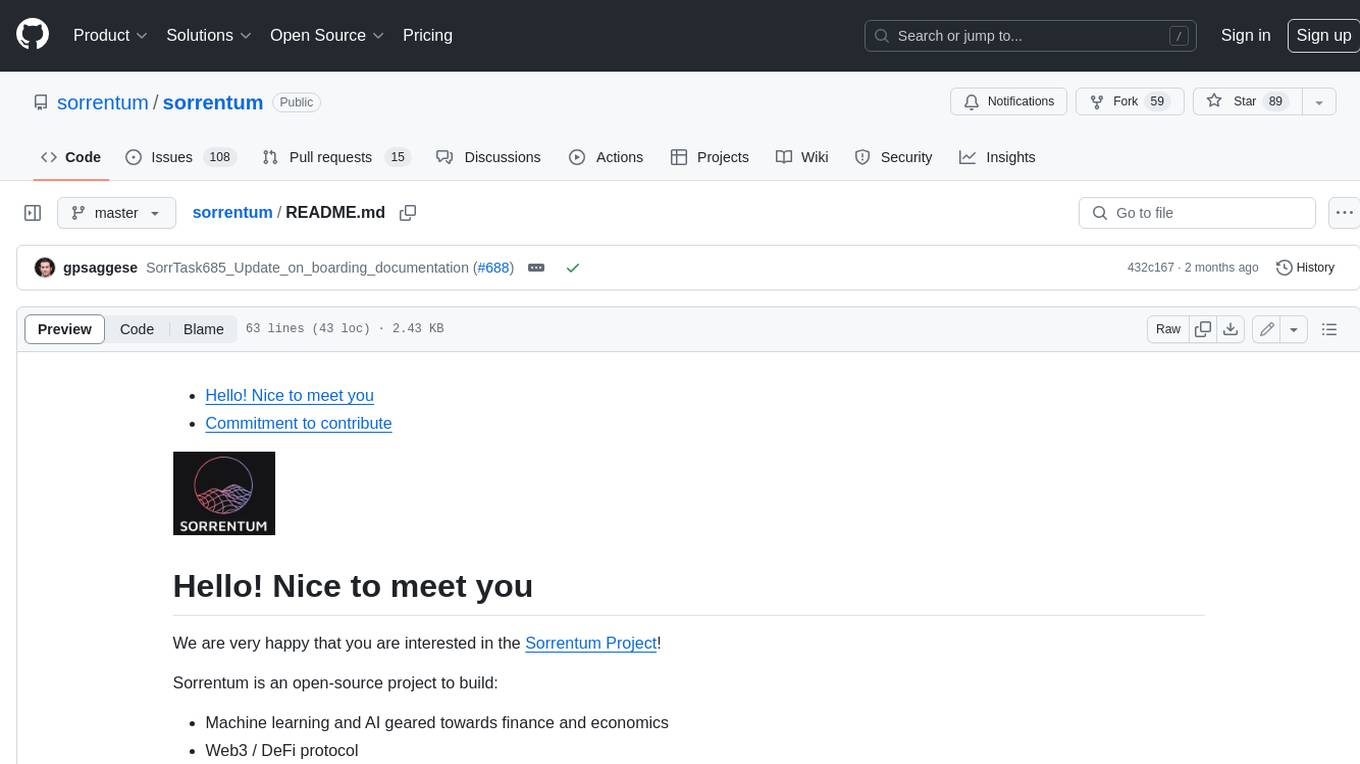
sorrentum
Sorrentum is an open-source project that aims to combine open-source development, startups, and brilliant students to build machine learning, AI, and Web3 / DeFi protocols geared towards finance and economics. The project provides opportunities for internships, research assistantships, and development grants, as well as the chance to work on cutting-edge problems, learn about startups, write academic papers, and get internships and full-time positions at companies working on Sorrentum applications.

tidb
TiDB is an open-source distributed SQL database that supports Hybrid Transactional and Analytical Processing (HTAP) workloads. It is MySQL compatible and features horizontal scalability, strong consistency, and high availability.

zep-python
Zep is an open-source platform for building and deploying large language model (LLM) applications. It provides a suite of tools and services that make it easy to integrate LLMs into your applications, including chat history memory, embedding, vector search, and data enrichment. Zep is designed to be scalable, reliable, and easy to use, making it a great choice for developers who want to build LLM-powered applications quickly and easily.
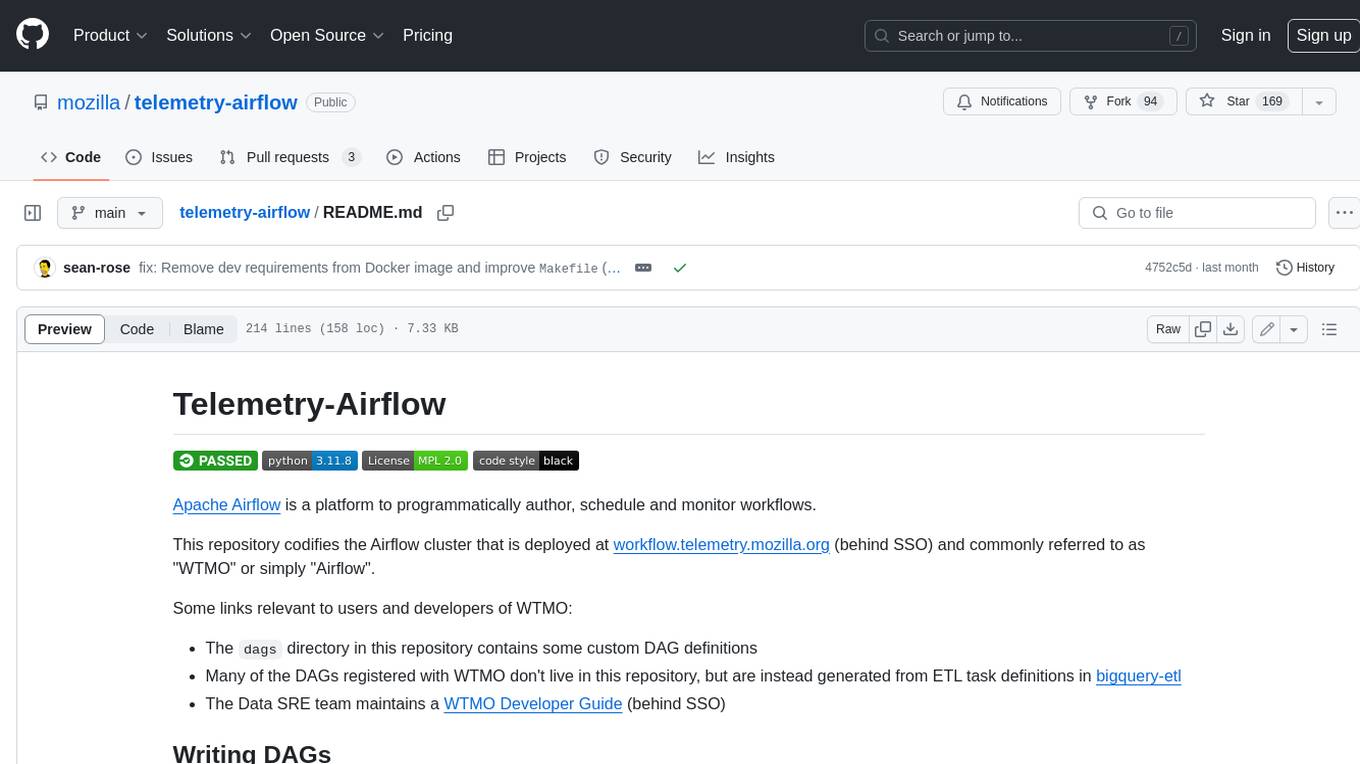
telemetry-airflow
This repository codifies the Airflow cluster that is deployed at workflow.telemetry.mozilla.org (behind SSO) and commonly referred to as "WTMO" or simply "Airflow". Some links relevant to users and developers of WTMO: * The `dags` directory in this repository contains some custom DAG definitions * Many of the DAGs registered with WTMO don't live in this repository, but are instead generated from ETL task definitions in bigquery-etl * The Data SRE team maintains a WTMO Developer Guide (behind SSO)

mojo
Mojo is a new programming language that bridges the gap between research and production by combining Python syntax and ecosystem with systems programming and metaprogramming features. Mojo is still young, but it is designed to become a superset of Python over time.

pandas-ai
PandasAI is a Python library that makes it easy to ask questions to your data in natural language. It helps you to explore, clean, and analyze your data using generative AI.

databend
Databend is an open-source cloud data warehouse that serves as a cost-effective alternative to Snowflake. With its focus on fast query execution and data ingestion, it's designed for complex analysis of the world's largest datasets.
For similar jobs

sweep
Sweep is an AI junior developer that turns bugs and feature requests into code changes. It automatically handles developer experience improvements like adding type hints and improving test coverage.

teams-ai
The Teams AI Library is a software development kit (SDK) that helps developers create bots that can interact with Teams and Microsoft 365 applications. It is built on top of the Bot Framework SDK and simplifies the process of developing bots that interact with Teams' artificial intelligence capabilities. The SDK is available for JavaScript/TypeScript, .NET, and Python.

ai-guide
This guide is dedicated to Large Language Models (LLMs) that you can run on your home computer. It assumes your PC is a lower-end, non-gaming setup.

classifai
Supercharge WordPress Content Workflows and Engagement with Artificial Intelligence. Tap into leading cloud-based services like OpenAI, Microsoft Azure AI, Google Gemini and IBM Watson to augment your WordPress-powered websites. Publish content faster while improving SEO performance and increasing audience engagement. ClassifAI integrates Artificial Intelligence and Machine Learning technologies to lighten your workload and eliminate tedious tasks, giving you more time to create original content that matters.

chatbot-ui
Chatbot UI is an open-source AI chat app that allows users to create and deploy their own AI chatbots. It is easy to use and can be customized to fit any need. Chatbot UI is perfect for businesses, developers, and anyone who wants to create a chatbot.

BricksLLM
BricksLLM is a cloud native AI gateway written in Go. Currently, it provides native support for OpenAI, Anthropic, Azure OpenAI and vLLM. BricksLLM aims to provide enterprise level infrastructure that can power any LLM production use cases. Here are some use cases for BricksLLM: * Set LLM usage limits for users on different pricing tiers * Track LLM usage on a per user and per organization basis * Block or redact requests containing PIIs * Improve LLM reliability with failovers, retries and caching * Distribute API keys with rate limits and cost limits for internal development/production use cases * Distribute API keys with rate limits and cost limits for students

uAgents
uAgents is a Python library developed by Fetch.ai that allows for the creation of autonomous AI agents. These agents can perform various tasks on a schedule or take action on various events. uAgents are easy to create and manage, and they are connected to a fast-growing network of other uAgents. They are also secure, with cryptographically secured messages and wallets.

griptape
Griptape is a modular Python framework for building AI-powered applications that securely connect to your enterprise data and APIs. It offers developers the ability to maintain control and flexibility at every step. Griptape's core components include Structures (Agents, Pipelines, and Workflows), Tasks, Tools, Memory (Conversation Memory, Task Memory, and Meta Memory), Drivers (Prompt and Embedding Drivers, Vector Store Drivers, Image Generation Drivers, Image Query Drivers, SQL Drivers, Web Scraper Drivers, and Conversation Memory Drivers), Engines (Query Engines, Extraction Engines, Summary Engines, Image Generation Engines, and Image Query Engines), and additional components (Rulesets, Loaders, Artifacts, Chunkers, and Tokenizers). Griptape enables developers to create AI-powered applications with ease and efficiency.











